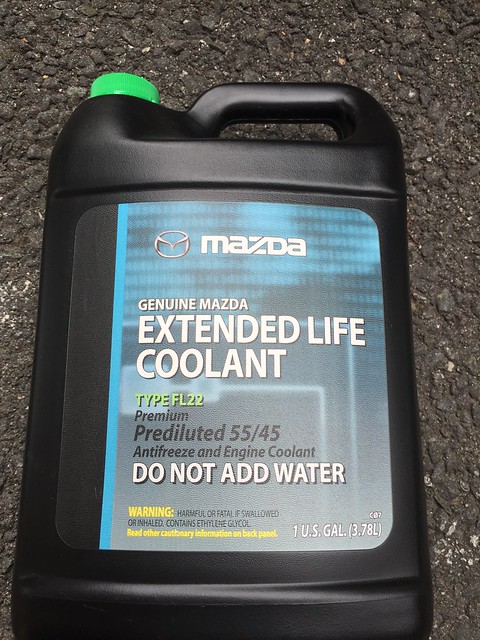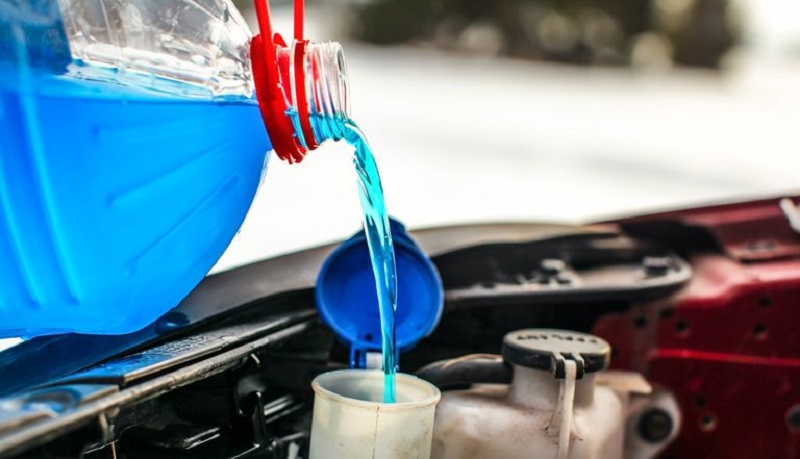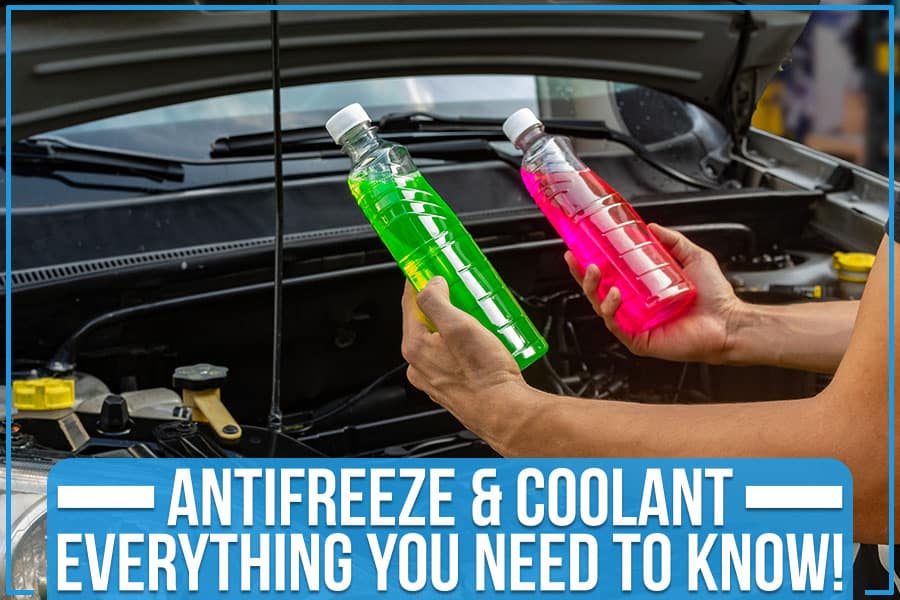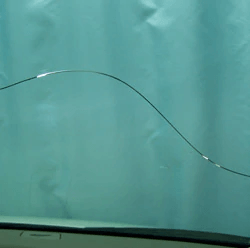Can I Mix Pink And Green Coolant
Mixing pink and green coolants is not recommended as it can lead to gelling and reduced cooling efficiency. Different types of coolants typically have incompatible chemical properties.
Understanding the intricacies of car maintenance ensures optimal performance and longevity of your vehicle. Coolants play a critical role in regulating your engine’s temperature, but they come in various formulations. Each color coolant represents a specific chemical composition and mixing them could create a reaction that negates their cooling properties.
Drivers need to recognize that keeping their cooling systems functioning requires the right type of coolant; mixing colors out of convenience could backfire, leading to potential engine damage. Selecting the correct antifreeze is crucial; remember to check your vehicle’s manual or consult with a professional. Ensuring the health of your engine’s cooling system could be as simple as choosing the right color coolant, so don’t cut corners when it comes to your vehicle’s fluids.

Credit: www.team-bhp.com
The Basics Of Coolant Colors
Your car’s coolant does more than just keep the engine cool. It’s an essential fluid that prevents overheating and protects against corrosion. Different coolant colors often indicate different chemical compositions and it’s important to know what they mean for your vehicle’s health.
Different Coolant Colors And Their Significance
Manufacturers use distinct colors to differentiate their coolant types:
- Green Coolant: Typically, older formulations with inorganic additive technology.
- Pink Coolant: Often contains organic acids that provide longer-lasting protection.
It’s not just about the colors. Each type has specific inhibitors that prevent corrosion in different ways.
Why Coolant Color Matters
Mixing coolants with different colors can lead to serious problems. Chemical reactions can cause:
| Corrosion: | The wrong mix can eat away at engine parts. |
| Sludge: | Unwanted gunk can clog your cooling system. |
| Reduced Efficiency: | Your cooling system may not work as it should. |
Always consult your vehicle’s manual or licensed mechanic before adding or mixing coolants.

Credit: bobistheoilguy.com
Understanding Coolant Technology
Coolants do more than just keep engines from overheating. They protect against corrosion, help maintain heat balance, and keep engine parts clean. But not all coolants are the same. Mixing different types might harm an engine. Know what’s in your coolant before blending colors like pink and green.
Types Of Coolant Additives And Their Functions
Every coolant contains additives that serve specific purposes:
- Corrosion Inhibitors: Protect metal parts from rust and wear.
- Anti-Foaming Agents: Prevent coolant from foaming, which can reduce efficiency.
- Water Pump Lubricants: Extend the life of the water pump and seals.
- Anti-Freeze: Stop the coolant from freezing in cold temperatures.
Inorganic Additive Technology (iat) Vs. Organic Acid Technology (oat)
IAT coolants are the traditional type, often green. They need changing more often but are generally cheaper. OAT coolants, sometimes pink, last longer but may be pricier. Here’s a table differentiating the two:
| Type | Color | Life Span | Price Level |
|---|---|---|---|
| IAT | Green | Shorter | Lower |
| OAT | Pink | Longer | Higher |
When mixing coolants like pink and green, remember: IAT and OAT serve different engines and needs. Mixing them can dilute or negate their protective properties. Always check with your vehicle’s manufacturer or a professional before mixing two different coolants.
Risks Of Mixing Pink And Green Coolant
Understanding the risks of mixing pink and green coolant is vital for your car’s health. Here’s why:
Chemical Reactions Between Different Coolants
Different coolants have unique formulas. Mixing them can lead to chemical reactions. These reactions may form harmful compounds. These compounds could:
- Reduce the coolant’s effectiveness in managing engine temperature.
- Cause corrosion and clogs inside the cooling system.
- Lead to several engine cooling issues, putting your car at risk.
Potential Damage To The Engine And Cooling System
Severe damage can occur when pink and green coolants are mixed. This may result in:
- Inconsistent cooling and overheating, which harms the engine.
- Leaks from the corrosion of seals and cooling components.
- A decrease in the overall lifespan of your car’s cooling system.
Manufacturer Recommendations On Coolant Mixing
Welcome to a crucial topic for car enthusiasts and every vehicle owner. Understanding the dos and don’ts of coolant mixing is key to maintaining your car’s cooling system. Let’s dive into what manufacturers suggest when it comes to mixing pink and green coolant.
Vehicle Manufacturer’s Guidelines
Always consult your vehicle’s manual first. Each car comes with specific instructions from its maker. They list the exact type of coolant suitable for the engine.
- Some automakers strictly advise against mixing. This can lead to chemical reactions that harm your engine.
- Different coolants for different cars. Often, coolants are formulated for specific engine types. Mixing could cause reduced effectiveness.
- Warranty risk. Using the wrong coolant or mixing coolants might void your warranty.
Coolant Manufacturer’s Advice
Check labels and data sheets. Coolant manufacturers provide compatibility information. This ensures users select the right coolant.
| Type of Coolant | Compatibility Notes |
|---|---|
| Pink Coolant | Often contains organic acids designed for specific engines. |
| Green Coolant | Traditional, inorganic formulation that may react with pink coolant. |
Look for mixable coolants. Some products can safely combine with other colors. Yet, mixing should be a last resort.
Consider a full flush. If in doubt, or if mixing has occurred, a complete system flush is smart. It removes all the old coolant.
Proper Coolant Maintenance Practices
Maintaining your vehicle’s coolant system is crucial for its long-term health and performance. The dynamic duo of pink and green coolant often leaves car owners baffled – should they mix? Generally, it’s a no-go zone. Different coolants serve different engine types. Mixing them can be like pouring water into your gas tank – a recipe for disaster. Before you find yourself stranded with a steaming hood, let’s dive into proper coolant maintenance practices, ensuring your ride stays cool under pressure.
How To Check And Change Coolant
Checking and changing coolant is a do-it-yourself friendly task. Always start with a cool engine to avoid burns. Follow these steps:
- Locate the reservoir. Find the plastic coolant reservoir under the hood.
- Check the level. Ensure the coolant reaches the ‘Full’ mark.
- Examine the color. Look for standard pink or green shades.
- Drain the old coolant. Use the drain petcock at your radiator’s bottom.
- Flush the system. Run distilled water through to remove deposits.
- Refill with fresh coolant. Follow the manufacturer’s mix ratio.
For complete system renewal, consult your vehicle’s manual for specific instructions.
Disposal And Environmental Considerations
Old coolant is not friendly to Mother Earth. Practice eco-conscious disposal:
- Gather the waste. Collect coolant in a sealable container.
- Label the container. Be clear it contains hazardous waste.
- Visit a recycling center. Certified centers know how to handle it.
Never pour coolant down the drain or onto the ground. It can contaminate water sources and harm wildlife.
What To Do If You’ve Mixed Coolants
What to Do if You’ve Mixed Coolants – While working on your vehicle’s cooling system, you might wonder if combining pink and green coolant is acceptable. The truth is, color can indicate coolant type and they might not be compatible. If you have inadvertently mixed pink and green coolant, there are crucial steps to take promptly. The right actions can prevent potential damage to your engine.
Immediate Steps To Take
Once you realize that you’ve mixed coolants, it’s vital to act swiftly. Stop using your vehicle to prevent further circulation of the mixed coolants. Next, check your vehicle’s maintenance manual. Different cars have various requirements. If you need assistance, consult a professional mechanic. They have the expertise to guide you through this issue. Remember, a quick response can save your engine from potential harm.
Flushing And Replacing Your Coolant System
To resolve the mix-up in your coolant system, a complete flush is necessary.
- Drain the mixed coolants – Remove all coolant from the radiator and engine.
- Flush with water – Use distilled water to flush the system fully, removing any residual mixed coolant.
- Refill with the correct coolant – Once the system is clean, add the manufacturer-recommended coolant.
This process ensures your vehicle operates effectively with the correct coolant protecting your engine. It might take several flushes to remove all traces of mixed coolants. Never skip this step to maintain your car’s optimal health.
Regular maintenance of your vehicle’s cooling system is crucial. Always be mindful of the type of coolants you’re adding. This simple attention to detail can save you both time and money in the long run.

Credit: www.team-bhp.com
Frequently Asked Questions For Can I Mix Pink And Green Coolant
Can You Mix Different-colored Coolants?
Mixing different-colored coolants is generally not recommended. Manufacturers formulate coolants with specific chemical compositions and mixing colors may indicate different coolant properties. This can lead to reduced effectiveness, potential chemical reactions, and possible damage to the cooling system.
Is It Safe To Combine Pink And Green Coolant?
It is unsafe to combine pink and green coolant. These coolants often have different base chemicals. Mixing them can cause clumping, reduced cooling efficiency, and even corrosion within the engine’s cooling system.
What Happens If You Mix Pink And Green Coolant?
Mixing pink and green coolant can result in a chemical reaction that forms gel-like substances. This gel can clog the cooling system, leading to overheating, potential engine damage, and costly repairs.
How Do I Know If My Coolant Is Compatible?
To determine coolant compatibility, consult your vehicle’s owner manual or the coolant manufacturer’s specifications. Compatibility is usually specified, and using the recommended type ensures proper function and prevents engine damage.
Conclusion
Mixing pink and green coolant isn’t recommended. It can cause chemical reactions, reduce effectiveness, and lead to engine damage. Always match coolant colors or opt for universal types after a full system flush. Consult your vehicle manual or a professional for the best guidance on your cooling system maintenance.






